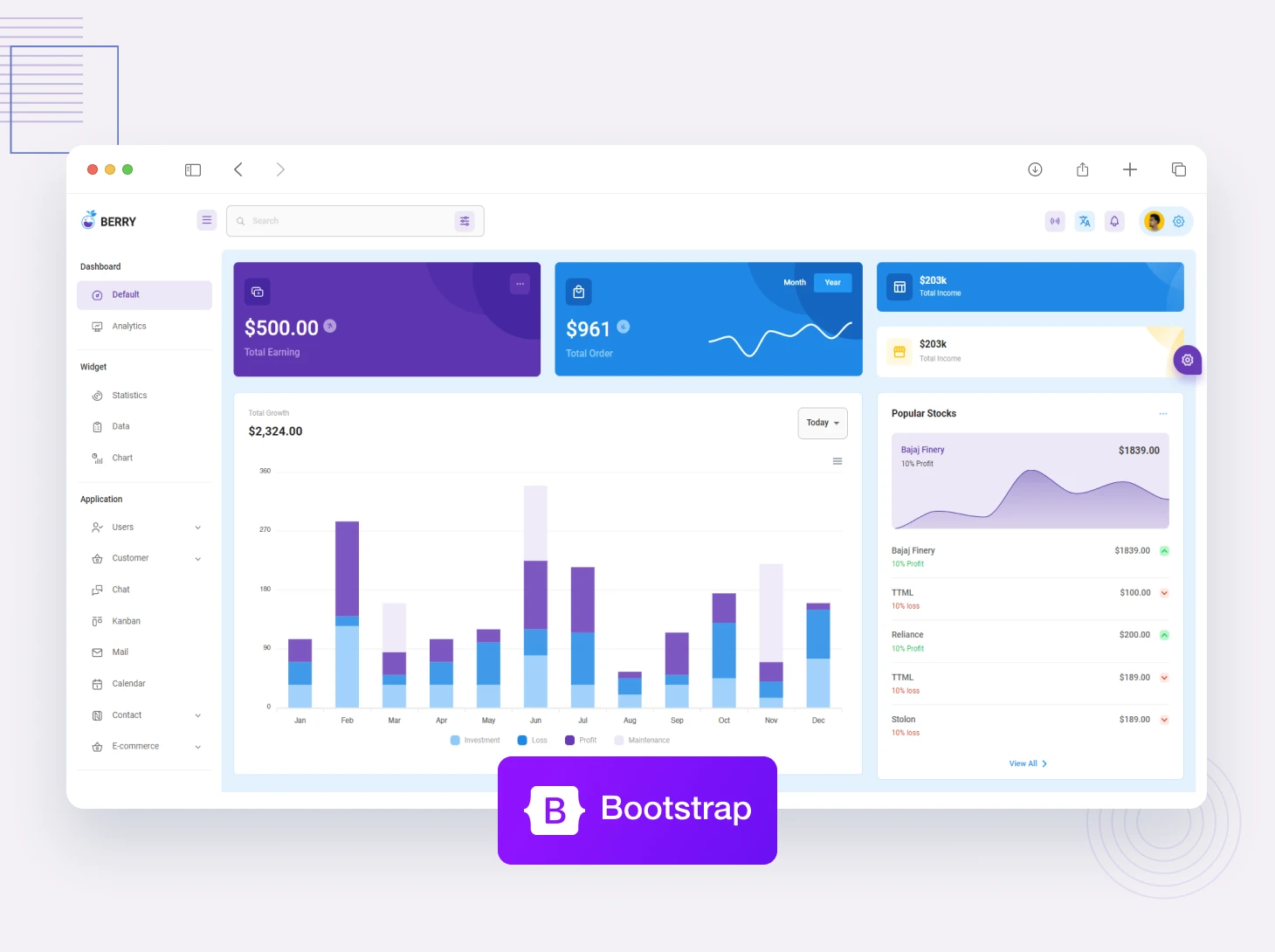Vitejs may help web developers like you launch your next project rapidly. With Create React App no longer encouraged, many developers are using newer frameworks and tools to construct their apps for a better development experience.
Nextjs, Gatsby, and Remix are famous and recommended by React teams. Vite.js is another platform for building modern web apps faster and better.
How about Vitejs? Vite (French for “quick,” pronounced veet) is a build tool that attempts to speed up and simplify modern online project development, according to its official description.
Vitejs is used to speed up development. Are you wondering why ViteJS is known for its fast speed of development? Let’s explore the reason:
What is Vite JS?
Vite JS, crafted by Evan You, is a non-bundling development environment tailored for Vue.js. Its main aim is to improve the frontend development process by speeding up app development.
During development, Vite employs native ES Module imports to deliver your code, enabling the creation of Vue.js single-file components without the need for bundling. Originally designed with Vue 3 in mind, Vite also extends its compatibility to other frameworks, such as React.
While initially geared towards Vue 3, Vite JS is versatile and can be applied to other frameworks like TezJS and React.
Positioned as a cutting-edge front-end development tool, Vite JS streamlines the workflow, offering a more efficient and faster approach to building modern web applications. Widely used for setting up development environments across frameworks like React and Vue, and Vanilla JavaScript apps, Vite JS simplifies the process with just three commands, incorporating a development server and hot reloading.
Vite is a vital link between Twig/Craft CMS and the next-gen front-end build tool Vite.js. Noteworthy features include Hot Module Replacement (HMR) for JavaScript, CSS, and Twig (even in the presence of errors) during development and optimized production builds.
Vite seamlessly generates necessary <script> and <link> tags for synchronous and asynchronous loading of JavaScript and CSS. Furthermore, it boasts a caching layer to enhance overall performance.
What is Vite JS used for?
Vite is a build tool that systemizes and improves the overall front-end development process. It enables configuring a development environment tailored explicitly for Vue, TezJS, and React frameworks.
Utilizing Vite JS facilitates the creation of high-speed single-page applications seamlessly integrated with various back-end systems. Furthermore, Vite supports Server-side Rendering (SSR) for enhanced performance.
Additionally, Vite comes equipped with built-in support for:
- JSX and TSX
- Typescript
- Static assets, including images and JSON files
- Importing CSS files and CSS preprocessor files such as .scss and .less
Key features of Vite
- Extremely fast cold starts – Vite uses esbuild, written in Go, to enable nearly instant start times for Vite’s server.
- On-demand load of files – Vite loads modules as files are needed, instead of bundling everything up front, which significantly improves performance during development.
- Hot module replacement (HMR) – Vite updates only the changed modules in real time rather than reloading the whole app, resulting in a more efficient development process.
- Framework agnostic – Vite supports Vue, React, Preact, Svelte, Lit, and even just plain old HTML and JS.
- Supports ‘Modern’ JS out of the box – Vite supports ES6+ syntax, TypeScript, JSX, and CSS transpilation / bundling.
- Optimized production build – Uses rollup for an optimized production build, supporting advanced features such as treeshaking, lazy loading, and code splitting.
- Plugin ecosystem – Vite is extensible via a rich ecosystem of plugins that can add additional functionality and that also support Rollup plugins.
- Built-in support for CSS and PostCSS – Vite supports CSS modules, Sass, Less, and PostCSS configurations out of the box, which are all useful in development.
How does ViteJS work?
The ViteJS framework enables a modern performance-oriented approach to frontend web development. In contrast to conventional build tools, which serve code that has already been bundled (compiled), Vite leverages native ES modules in the browser. It can serve files on demand to the client and provide the fastest cold starts and the closest to instantaneous Hot Module Replacement (HMR) for updates. There is no time wasted waiting for a full build of a large bundle. Vite only runs code as it is requested.
To understand how Vite achieves such a rapid turnaround on the initial cold start, it is important to understand that Vite splits its workflow between build processes that happen in development and in production, particularly for HMR. For development, it simply never bundles. For production builds, Vite uses Rollup to optimise the bundling of assets. With native support for modern browsers and modern developer tooling, Vite provides an environment that is incredibly fast, scalable, and easy to work on as a developer.
Why optimize for Vite JS?
Let’s delve into the reasons behind choosing Vite for your projects after getting acquainted with what Vite is all about.
1. Enhanced performance
Vite.js stands out in terms of performance thanks to its clever use of pre-bundling with ESbuild. This technique allows Vite.js to achieve speeds 10 to 100 times faster than other JavaScript bundlers. The pre-bundling step, powered by build, significantly reduces Vite’s cold start time, making it one of the quickest JavaScript-based bundlers available.
2. Replace hot modules seamlessly
Vite.js’ easy integration of Hot Module Replacement is a highlight. Your application can be updated in real-time without reloading the website. HMR loads only updated application portions, preserving the program’s state and saving development time.
3. Configuration flexibility
Vite.js’ comprehensive configuration options provide you with more project control. Create a vite.config.js or vite.config.ts file in your project’s root directory to alter the default setup. This versatility lets you customize plugins, asset processing, and more. The CLI option –config enables you to specify an alternative configuration file.
Why is ViteJS fast?
ViteJS’s remarkable speed is rooted in integrating two key trends that have shaped the web development landscape. Here’s why ViteJS is considered a fast framework:
1. Modern JavaScript adoption:
- ViteJS leverages the widely supported modern JavaScript, a language that has become a standard in web development.
- The global support for Native ES modules, a key component, exceeds 92%, and this number continues to grow as outdated browsers, like IE11, phase out.
2. Native language data compilers:
- ViteJS leverages the widely supported modern JavaScript, a language that has become a standard in web development.
- The global support for Native ES modules, a key component, exceeds 92%, and this number continues to grow as outdated browsers, like IE11, phase out.
3. Efficient hot module reloading (HMR):
- Traditional workflows involve updating the entire bundle upon file modifications, leading to a time-consuming process to visualize changes.
- ViteJS revolutionizes this by using native module imports, ensuring that Hot Module Reload is swift and instantaneous.
- This optimization streamlines the development process, making it more responsive and agile.
An intelligent mix of factors makes ViteJS fast. Modern JavaScript and Native ES modules provide a solid foundation for quick development. Data compilers written in native languages, such as Esbuild and SWC, enhance performance significantly.
ViteJS’s Hot Module Reloading is notable. ViteJS’s native module imports provide quick, smooth reloading without changing bundles. This boosts developer productivity and makes ViteJS a frontend development leader.
Experience the Best Utilization of Vitejs in – Vue Admin Template
Wrapping up
From its 2020 debut, ViteJS has quickly become a developer favourite. Fast and lightweight, its youth belies its strength. Vite reduces build process complexity, letting developers focus on code development without interruptions. Vitale’s native module imports and quick Hot Module Reloads are notable. Vite’s agility and explosive performance are summed up by this crucial quality. ViteJS is likely to influence front-end development tools as developers appreciate its efficiency.
FAQs
Who built ViteJS?
ViteJS was created by Evan You, who is also the creator of Vue.js. It was built to help developers target the performance issues many of them had experienced using traditional bundlers like Webpack when building at scale.
Is ViteJS fast?
Vite is indeed fast! This is because of the native ES modules it uses and the super speedy build tool called esbuild! It greatly reduces cold start time and has practically instant hot module replacement.
Can I combine Vite with other front-end technologies such as Vue.js or React?
Of course! All of the main frameworks are supported by Vite, including vanilla JavaScript, Vue, React, Preact, and Svelte! It also provides preconfigured templates, making it easy to get started with your preferred stack.
Is ViteJS a framework?
No, Vite is not a frontend framework. It is a modern build tool that aims to create a fast development experience and bundling for any frontend application, regardless of the framework.
Is Vite the same as Webpack?
WebPack is also a bundler, but its core architecture is different from Vite. During development, Vite builds source files via ESM, which makes them distinctly faster than Webpack. When using Webpack, you only get a bundled file at the end, which is decoded fully based on a configuration file.
What is Vite Vue?
Vite Vue means to use Vue.js in a Vite codebase. Vite provides a seamless experience with hot reloads and native support for Vue Single File Components (SFC).
Does Vite work with React?
Yes, Vite has full support for React development, including JSX, TypeScript, and fast refresh. Vite also provides a React template so you can quickly create a new project with very little setup.
What is the benefit of using Vite?
Fast production builds, lightning-fast HMR, and quick cold starts are all possible with Vite. Vite also reduces configuration overhead, and is optimised for modern JavaScript and component-based architectures.
Checkout – Top 11+ Vue Component Libraries








Comments